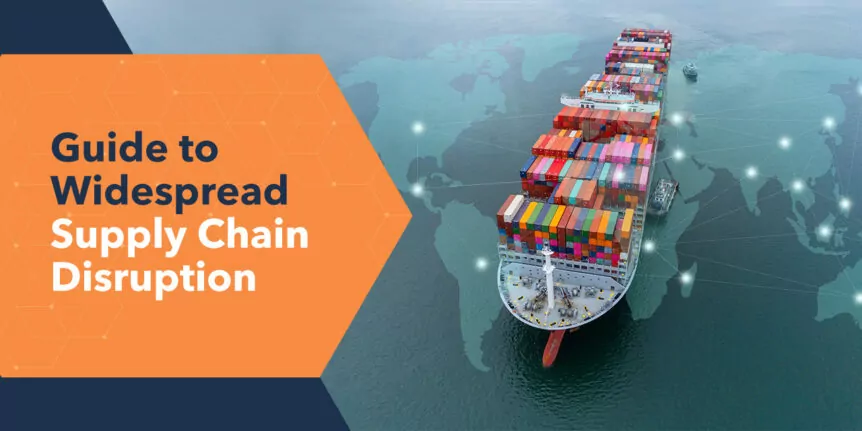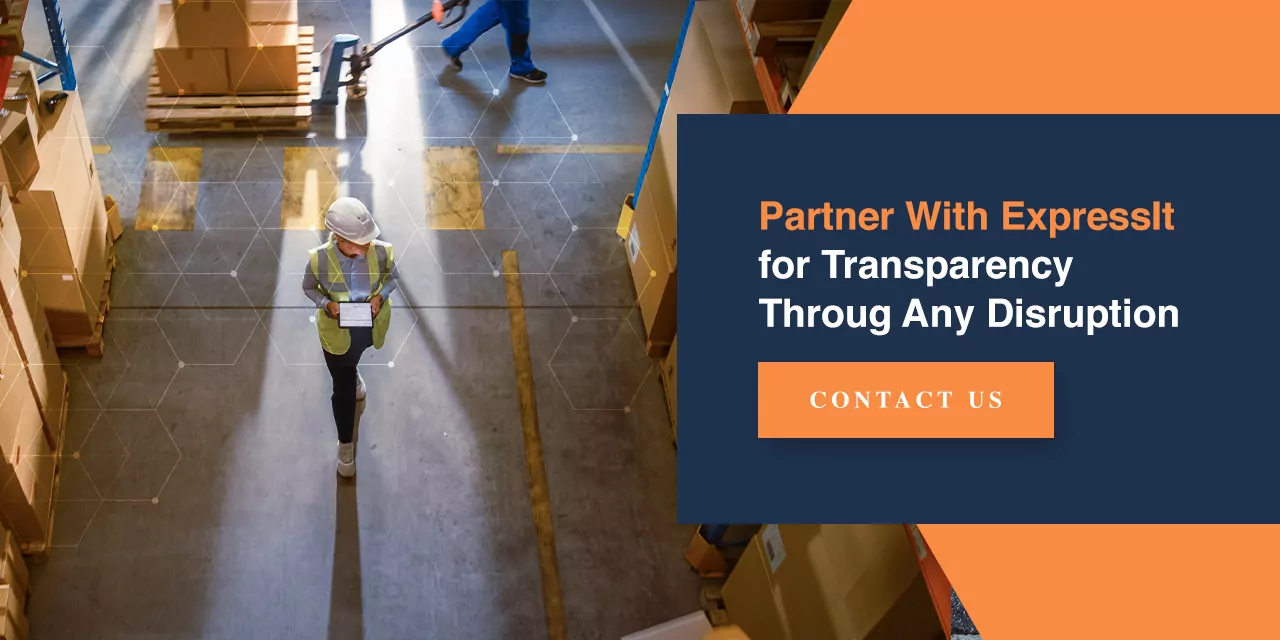Pandemics, natural disasters, geopolitical disruptions and other widespread phenomena can arise at any moment. These events can cause issues like product shortages and delays while increasing costs.
While widespread disruptions can be tricky to navigate, they present many opportunities for businesses to streamline, focus and expand their critical services to meet challenges and demands. The guide below will discuss how pandemics and other events impact the supply chain and how you can manage the hurdles and logistics opportunities.
What Is Supply Chain Disruption?
Supply chain disruptions include any event that interferes with the movement of products through the supply chain. They can happen for many reasons, such as the standstill we saw during the COVID-19 pandemic when 75% of organizations experienced supply chain disruptions.
When the supply chain is disrupted, companies must grapple with product shortages, transport issues and increased overheads that lead to higher prices for consumers.
How Is the Supply Chain Affected by Different Phenomena?
The COVID-19 pandemic highlighted some key logistics challenges and taught us how to better navigate similar situations in the future. Like several other industries, supply chains experienced magnified challenges during this time because they were front and center in the public eye, with pandemic-related shortages sometimes making the front-page news. Aside from pandemics, here are some examples of supply chain disruptions from external phenomena:
- Natural disasters: Natural disasters impact the supply chain by halting key processes. One example is the 2011 earthquake on Japan’s Pacific coast, which triggered a tsunami that disrupted small parts of global operations. The tsunami caused a nuclear accident, which paused the global supply of semiconductor components.
- Logistics delays: A supply breakdown, political unrest or pandemic can cut off product or raw material delivery, halting supply chain processes like manufacturing.
- Cyberattacks: Cybersecurity threats, like the one Target experienced in 2014, can disrupt operations and give hackers access to sensitive information.
- Price fluctuations: Price fluctuations due to inflation and global economics can increase your transport and manufacturing overheads, impacting your budgets and consumer spending.
- Product problems: Problems with product quality can occur at any point in the supply chain and impact your business’ reputation.
Challenges Associated With Supply Chain Disruptions
Explore four challenges associated with supply chain disruptions below.
Global Traffic Restrictions
Global travel bans with import and export restrictions can cause international challenges. Even where the supply of available products remains robust, many suppliers can face difficulty moving their stock because of border closures and lengthy customs delays. Supply chain losses are typically more dramatic when there are longer, looser restrictions than shorter, stricter ones. Additionally, losses worsen as the number of countries involved increases.
Supply Shocks
Declines that come in brief, sudden bursts are called supply shocks. When supply decreases hit, companies must quickly determine what other sources of products and parts they can access. Some trust in supply chain resilience and hold firm in their existing practices, hoping the shock will be temporary. Others scale back production dramatically or search for alternative suppliers.
Demand Volatility
Demand for some essential goods can suddenly increase dramatically. The United States experienced this phenomenon during the COVID-19 pandemic’s early days. Infamously, toilet paper and other staple products like bread, pasta, rice, flour, hand soap and other cleaning supplies began to disappear from grocery store shelves.
Inventory Shortages
The issue here is often inaccurate forecasting rather than production capabilities. Demand for these staple products generally remains relatively steady, so manufacturers and suppliers can pinpoint how much product they need to send out. As a result of lessons learned from the pandemic, many manufacturers now carry up to 10% more inventory than their target levels, so they can respond surefootedly to demand spikes.
How Can You Build a Resilient Supply Chain?
By focusing on the following areas of improvement, your organization can build a strong supply chain that can handle disruptions and continue to operate smoothly.
Prioritize Automation
Automation is becoming a significant priority for many businesses. Automated systems help you manage your inventory, conduct accurate demand forecasting and monitor shipments. This move frees up employees from routine tasks and enables them to exercise their creativity and problem-solving skills on more complex work.
You can also invest in advanced technologies like blockchain and artificial intelligence. These tools will help improve operational efficiency, enhance your supply chain’s resilience and predict potential issues, allowing you to take proactive measures.
Invest in Faster Delivery Options
As many consumers prefer online shopping, it is important to cater to these preferences while providing faster delivery options to satisfy consumer demand. To meet these goals, consider partnering with a third-party logistics provider to boost customer satisfaction and retention. You can explore the following delivery options:
This scenario presents a tremendous opportunity for business organizations to strengthen their third-party connections. It also allows delivery operations to showcase their dependability, flourish and grow.
Increase Transparency
Global events like the COVID-19 pandemic showed us the importance of transparency. For example, the need to ensure employee and consumer safety has led to a push for improved supply chain visibility. Post-pandemic, distribution centers now require more detailed information on what risk management practices suppliers have implemented. Consumers also want specific reassurances that the delivery personnel coming to their homes have taken the recommended strategies to keep themselves and their client contacts safe.
You can increase transparency by using technology that provides real-time visibility into each stage of the supply chain. This helps you identify potential issues quickly and allows you to take swift corrective action.
Diversify Suppliers
Add local suppliers to your operations to overcome potential trade barriers. Having multiple suppliers in different regions reduces the risk associated with supply chain interruptions. It ensures that if one supplier faces delivery challenges, others can step in and fill the gap.
Partner With ExpressIt for Transparency Through Any Disruption
A well-managed supply chain is crucial for keeping operations running smoothly and maintaining product quality during local or global disruptions. Understanding the impact disruptions can have will empower you to put contingency plans in place and mitigate disruption risk.
Turn to ExpressIt for supply chain solutions. Our woman-owned, WBENC-certified business offers warehousing and expedited delivery solutions across a range of industries. Whether you need routed delivery, courier delivery, same-day delivery, last-mile delivery or a custom option, we are happy to work with you to meet your individual business transportation needs.
We also take pride in our responsive customer service. Our friendly, forward-thinking professionals are happy to consult with you about the best delivery strategies for your business and help you solve the challenges you face, pandemic-related or otherwise.
Contact us today to schedule a delivery or request a quote.



